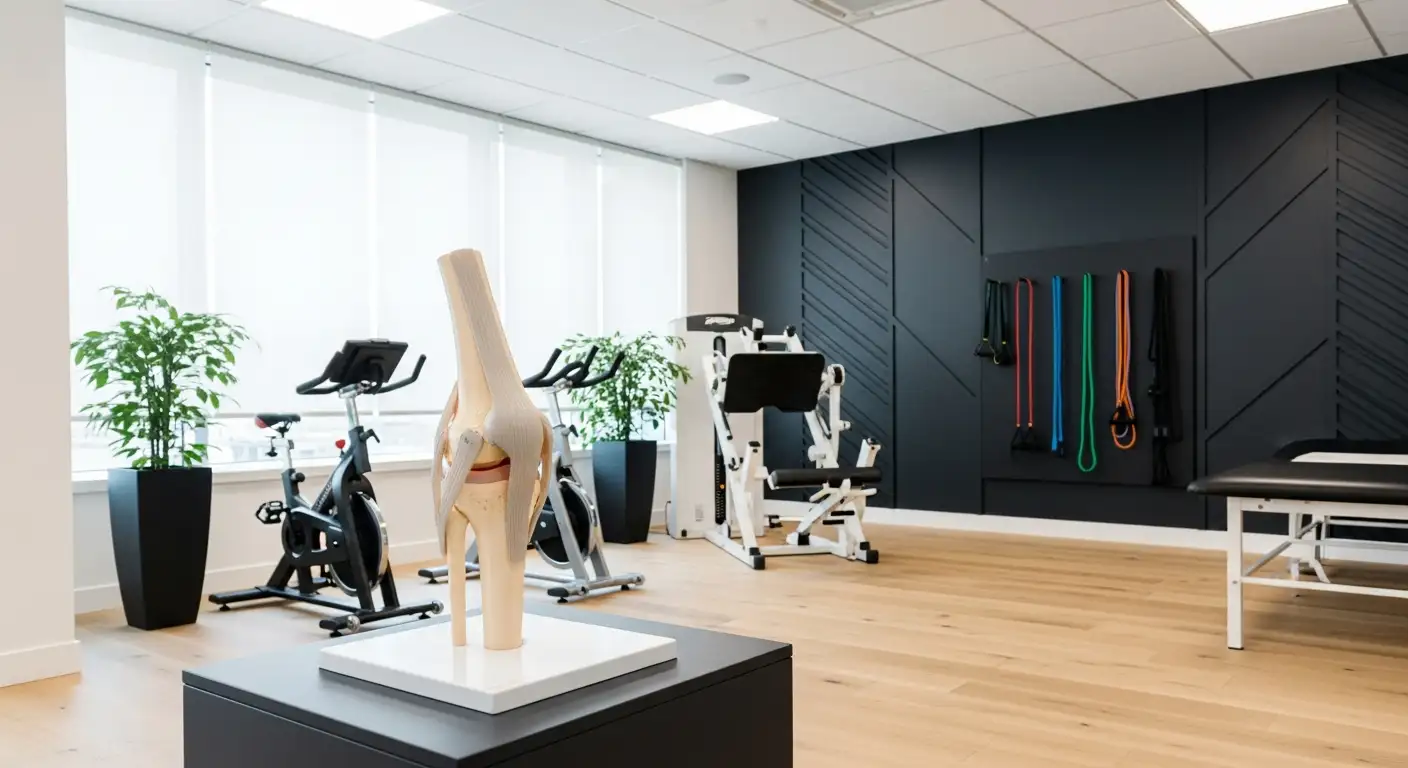Alleviating Inner Knee Pain During Bending
When it comes to avoiding knee pain while running, there are several strategies you can employ to alleviate inner knee pain during bending. By incorporating these practices into your running routine, you can help prevent knee discomfort and maintain a pain-free running experience.
Strengthening Exercises for Knee Pain Prevention
Strengthening the muscles around the knee, such as the quadriceps and hamstrings, can play a crucial role in preventing knee pain while running. Strong muscles provide better support and stability to the knees, reducing the risk of injury and discomfort. Including exercises like squats, lunges, and leg extensions in your regular fitness routine can help build strength in these muscle groups.

Importance of Proper Running Shoes
Wearing proper running shoes is paramount in reducing knee pain during running. The right pair of running shoes should provide adequate support and cushioning to minimize the impact on the knees and lower the risk of knee pain. Look for shoes with good shock absorption and stability to ensure optimal protection for your knees [2]. Additionally, choose shoes that offer motion control and stability features, especially if you have overpronation or flat feet, as these can help prevent knee pain.
Gradual Increase in Running Intensity
One common mistake that can lead to knee pain is pushing yourself too hard, too quickly. Gradually increasing the intensity and duration of your runs allows your body to adapt and build strength over time, reducing the risk of knee pain. By giving your body enough time to adjust to the demands of running, you can help prevent overuse injuries and minimize knee discomfort.
Running on Softer Surfaces
The surface you run on can also impact your knees. Opting for softer surfaces, such as grass or a track, can help absorb shock and reduce the strain on your knees, decreasing the risk of knee pain [1]. Running on softer surfaces provides a gentler landing for your joints and can help alleviate pressure on the knees.
Maintaining a Healthy Body Weight
Maintaining a healthy body weight is essential for preventing knee pain while running. Excess weight puts additional stress on the knees, increasing the risk of discomfort and injury [1]. By maintaining a healthy weight through a balanced diet and regular exercise, you can minimize the strain on your knees and enhance your overall running experience.
By incorporating these practices into your running routine, you can alleviate inner knee pain during bending and enjoy a more comfortable and pain-free running experience. Remember to consult with a healthcare professional if you experience persistent or severe knee pain to ensure proper diagnosis and treatment.
Preventing Knee Pain When Running
To avoid knee pain while running, it's important to implement several strategies that promote proper form, strength, and recovery. By incorporating these practices into your running routine, you can help reduce the risk of knee pain and maintain a healthy and enjoyable running experience.
Choosing the Right Running Shoes
Selecting proper running shoes that provide adequate support and cushioning is crucial in preventing knee pain. Well-fitted running shoes help reduce the impact on the knees and lower the risk of injury. It's recommended to choose shoes that are designed specifically for running and replace them when they become worn out.
Strengthening Exercises for Knee Stability
Strengthening the muscles around the knees, such as the quadriceps and hamstrings, is essential for providing stability and support to the knees while running. By incorporating exercises that target these muscle groups, such as squats, lunges, and leg presses, you can improve knee stability and reduce the risk of knee pain [2].
Gradual Increase in Running Mileage
To prevent knee pain, it's important to gradually increase the mileage and intensity of your runs. This approach allows your body to adapt and build strength over time, reducing the risk of overuse injuries and knee pain. Gradually increasing your running mileage helps your muscles, tendons, and joints adjust to the demands of running without putting excessive stress on your knees.
Incorporating Cross-Training Activities
Incorporating cross-training activities into your running routine can help reduce the impact on your knees and prevent overuse injuries. Engaging in low-impact exercises like swimming, cycling, or using an elliptical machine helps strengthen different muscle groups while giving your knees a break from the repetitive impact of running.
Proper Running Form
Maintaining proper running form is vital in preventing knee pain. It's important to focus on landing with a midfoot strike, keeping your feet underneath your body, and maintaining an upright posture. By avoiding excessive heel striking and forward leaning, you can reduce stress on your knees and minimize the risk of knee pain.
Rest Days and Recovery
Taking regular breaks during running and incorporating rest days into your training schedule is crucial for preventing knee pain. Rest days allow your body, including your knees, to recover and repair from the stress of running. Adequate rest and recovery help prevent overuse injuries and ensure that your knees are ready for the next run [2].
By focusing on proper footwear, strength exercises, gradual mileage increase, cross-training, maintaining proper form, and allowing for rest and recovery, you can significantly reduce the risk of knee pain while running. Remember to listen to your body and seek professional advice if you experience persistent or severe knee pain. Happy and pain-free running!
Stretching and Warm-Up Exercises for Knee Health
To maintain knee health and prevent pain while running, it is important to include stretching and warm-up exercises as part of your routine. Stretching helps improve flexibility, increase range of motion, and protect the knee from potential injuries. Here are some essential exercises to incorporate into your warm-up:
Importance of Stretching Before Running
Before embarking on a run, it is crucial to perform a light warm-up and engage in stretching exercises. Stretching helps prepare the muscles and joints for the physical activity ahead, reducing the risk of strain and injury. It also promotes blood flow to the muscles, improving their flexibility and overall performance. By spending a few minutes on stretching exercises, you can help prevent or alleviate knee pain during your run [5].
Dynamic Stretching for Knee Warm-Up
Dynamic stretching involves active movements that mimic the motions of running. These exercises not only warm up the muscles but also help improve flexibility and range of motion. Here are three dynamic stretching exercises for a knee warm-up:
Strengthening Exercises for Knee Support
In addition to dynamic stretching, it is beneficial to incorporate strengthening exercises to support the knee joint. By strengthening the muscles around the knee, you can enhance stability and reduce the risk of knee pain. Include the following exercises in your routine:
By incorporating these stretching and strengthening exercises into your warm-up routine, you can help improve knee health and reduce the risk of knee pain while running. Remember to perform each stretch for 15-30 seconds without bouncing, and repeat 2-3 times. Additionally, it is important to stretch equally on both sides of the body and for both the upper and lower body. Prioritize your knee health to ensure an enjoyable and pain-free running experience.
Runner's Knee: Causes and Prevention
Runner's knee, also known as patellofemoral pain syndrome, is a common running-related knee injury characterized by pain in the front of the knee. It is often caused by weakness of the core and hips [5]. Understanding the causes and implementing preventive measures can help runners avoid this frustrating condition.
Understanding Runner's Knee
Runner's knee occurs when the patella (kneecap) does not track properly, causing irritation and pain. It can be caused by factors such as overuse, muscle imbalances, poor running technique, or inadequate footwear. To prevent runner's knee, it is important to address these contributing factors.
Strengthening Core and Hip Muscles
Strengthening exercises play a crucial role in preventing runner's knee. In addition to focusing on the hamstrings and quadriceps, it is essential to strengthen the core and glute muscles [5]. Strengthening these muscles provides support and stability to the knees, reducing the risk of pain and injury.
Incorporate exercises like squats, lunges, and leg presses into your training routine to target the quadriceps, hamstrings, and glutes. Plyometric training, involving jumping or explosive movements, can also be beneficial. Light weight training for 10 to 15 minutes twice a week can help improve muscle strength.
Icing for Knee Soreness
After a run, icing the knees can help alleviate soreness and reduce inflammation. One technique used by professional athletes is sitting in cold water for 5 to 10 minutes. However, it's important to consult with a doctor or physical therapist before attempting this method to ensure it is appropriate for your specific situation.
Incorporating Other Forms of Cardio
To reduce repetitive strain and potential injury, it is beneficial to incorporate other forms of cardio into your running routine. Activities such as cycling, swimming, or circuit training can provide cardiovascular benefits without placing excessive stress on the knees. These alternatives can be done a few times a week to supplement your running routine and give your knees a break.
By understanding the causes of runner's knee and implementing preventive measures, runners can minimize the risk of experiencing knee pain. Strengthening the core and hip muscles, using ice for soreness, and incorporating other forms of cardio into their routine can help runners maintain healthy knees and enjoy pain-free running sessions.
Proper Running Technique for Knee Pain Prevention
To avoid knee pain while running, it is essential to focus on maintaining proper running form, strengthening the muscles around the knees, gradually increasing running intensity, choosing the right running shoes, and incorporating cross-training and low-impact activities into your routine.
Importance of Proper Running Form
Proper running form plays a crucial role in preventing knee pain. Landing with a midfoot strike, rather than a heel strike, can help reduce stress on the knees. Maintaining an upright posture and engaging the core muscles can also help distribute the impact of running more evenly throughout the body, alleviating strain on the knees [3].
Strengthening Muscles Around the Knees
Strengthening the muscles around the knees, such as the quadriceps, hamstrings, and glutes, is vital for providing support and stability to the knees while running. Exercises like squats, lunges, and leg presses can help strengthen these muscles, reducing the risk of knee pain and injury. Regular strength training sessions targeting these muscle groups can improve overall knee health and resilience.
Gradual Increase in Running Intensity
A gradual increase in running intensity is essential to prevent knee pain. It allows the body to adapt and build strength over time, reducing the risk of overuse injuries. Instead of suddenly increasing mileage or pace, aim for incremental changes that allow your body to adjust and recover between runs. Gradual progression is key to avoiding excessive stress on the knees and minimizing the likelihood of developing knee pain.
Choosing the Right Running Shoes
Wearing appropriate running shoes that provide adequate support and cushioning is crucial for preventing knee pain. Properly fitted shoes can help reduce the impact on the knees and provide necessary stability. Look for shoes that offer good arch support, shock absorption, and cushioning tailored to your foot type and running style. Consulting with a knowledgeable shoe specialist can help you find the right pair of running shoes for your specific needs.
Cross-Training and Low-Impact Activities
Incorporating cross-training exercises and low-impact activities into your training routine can help reduce the risk of knee pain. Activities such as swimming, cycling, or using an elliptical machine provide cardiovascular benefits without placing excessive stress on the knees. By diversifying your workouts, you give your knees a break from the repetitive impact of running while still maintaining fitness levels [6].
By focusing on maintaining proper running form, strengthening the muscles around the knees, gradually increasing running intensity, choosing suitable running shoes, and incorporating cross-training and low-impact activities, you can significantly reduce the risk of knee pain while running. Take care of your knees to ensure a comfortable and enjoyable running experience.
References
[2]:
[3]:
[4]:
[5]:
[6]:




